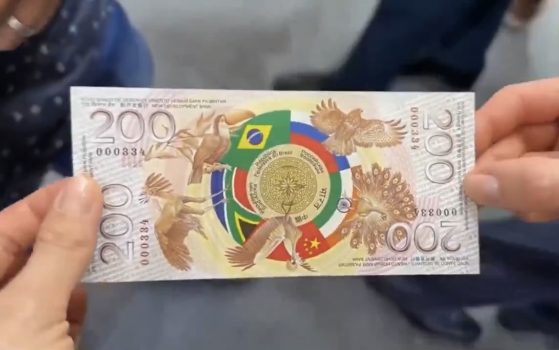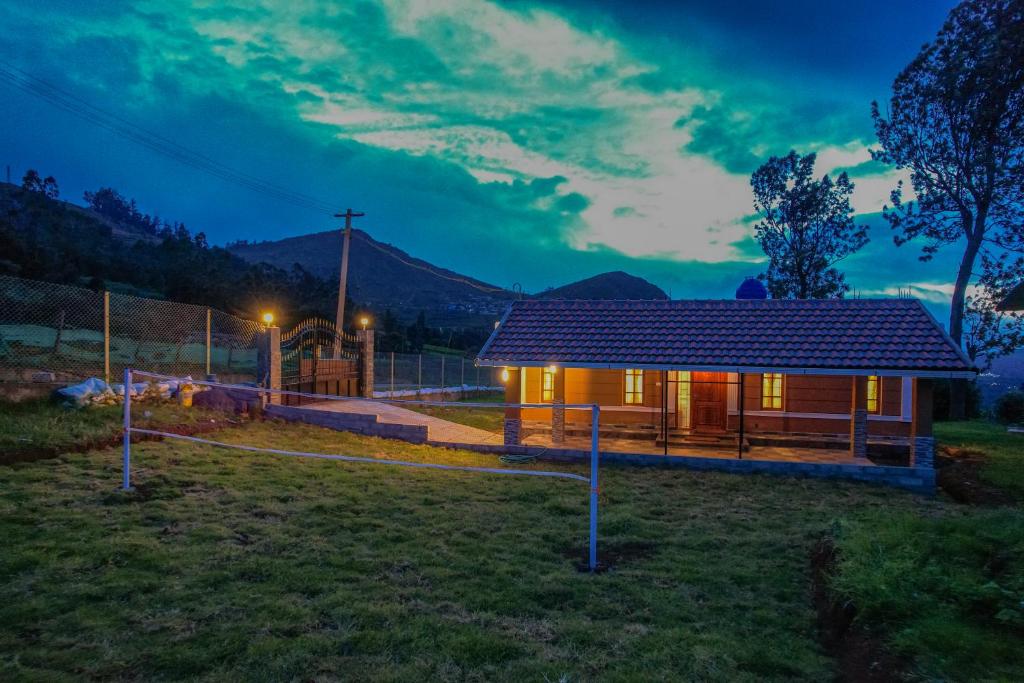 Pin
Pin BRICS Currency has stirred curiosity ever since leaders hinted at the concept. In mid‑2022, at a summit, Russia’s president suggested the possibility of a “new global reserve currency” — and a mock banknote made headlines. Still, at the July 2025 Rio de Janeiro summit, no launch date emerged. The focus stayed on enhancing local currency trade and building BRICS Pay, their digital payment system.
At the Rio meeting, leaders reaffirmed technical discussions only — no formal plan for a unified currency yet. Analysts and financial officials stressed that unity under a single currency remains far off, given the great diversity in economies and governance structures across the bloc.
Still, the idea is not abandoned. In June 2024, an Indian representative said the bloc was aiming for readiness within three to four years — possibly as soon as 2027. Others argue an earlier pilot by 2026 could be feasible under a phased rollout.
Table of Contents
What Is the BRICS Currency Idea?
In late 2024, at a summit in Kazan, BRICS leaders unveiled a symbolic banknote featuring their flags—a powerful visual hint at a dream of deeper financial integration among Brazil, Russia, India, China, and South Africa. While dramatic, it didn’t mark formal adoption. It felt like a teaser—for now, the group remains in the talking stage, not the launch pad.
Fast‑forward to July 6–7, 2025, when the Rio de Janeiro summit wrapped: the message was familiar. No unified currency was birthed. Instead, countries renewed pledges to boost trade in their national currencies and deepening work on BRICS Pay, their shared digital payments platform.
Behind this cautious pace is complexity: member economies vary in size, inflation trends, political systems and digital readiness. As Russian President Putin put it in October 2024, a common currency is “a long‑term prospect”—not yet under active consideration.
Why 2026–27 Keep Coming Up — What Experts Say
By mid‑2024, an Indian BRICS official hinted that their currency project would be ready within three to four years—putting a target around 2027. Then, in July 2025, analysts from UltimaMarkets suggested that progress is strong enough to realistically expect a pilot or soft launch by 2026. That shift reflects not over‑promise, but cautious optimism: digital tools are developing faster than political consensus.
Still, Brazil’s current presidency has ruled out any formal currency launch in 2025. Instead, their focus lie on expanding settlement in national currencies, and further building out BRICS Pay infrastructure. The Rio summit reaffirmed that—no unified currency yet, just technical planning and continued work on digital payment platforms under development.
Experts also caution: the BRICS nations lack synchronized monetary systems. A true common currency would need aligned fiscal rules, banking union, and macroeconomic harmony—a structure that currently doesn’t exist in the bloc. This makes a fully operational BRICS Currency in just a couple of years ambitious at best.
What Happened at the Rio Summit in July 2025?
When BRICS met in Rio on July 6–7, 2025, some hoped for a surprise announcement of a unified currency. Instead, leaders confirmed progress was still in technical preparation, not a launch. They emphasized boosting settlement in local currencies and accelerating development of BRICS Pay, their cross-border digital payment network.
For the first time, without fanfare, member nations reported that nearly 90% of BRICS trade now uses local currencies—a jump from roughly two‑thirds just a couple of years ago. That rapid shift shows substance behind the rhetoric, but not enough coordination yet to collapse into one currency.
Brazil’s central bank also made it clear: there is no plan to push a common currency in 2025. Instead, the agenda centers on building interoperable systems and exploring blockchain standards, not issuing a new monetary unit anytime soon.
Is BRICS Currency Meant to Replace the Dollar?
One of the most common assumptions floating online is that the BRICS currency is designed to “kill the dollar.” But experts say that’s an oversimplification. While BRICS members have openly criticized U.S. dollar dominance in trade and finance, their current steps—like expanding local currency trade—aren’t about full replacement. They’re about reducing dependency.
At the Rio summit, leaders repeatedly stated their goal is “a more balanced global monetary system,” not a direct attack on the dollar. For example, Russia now trades oil with China in yuan, and India recently began settling oil imports with the UAE in rupees. These moves point to a desire for multipolarity, not a sudden upheaval.
In practical terms, dethroning the dollar would require decades, not years. The dollar’s role in commodities, finance, and global reserves is deeply rooted. So even if a BRICS currency does launch in 2026 or 2027, it will likely begin as a regional tool—not a world challenger overnight.
Could BRICS Currency Work Like the Euro?
The euro is often brought up as the closest comparison to what BRICS might attempt. But there’s a key difference: the euro emerged after decades of tight economic integration, treaties, and shared institutions. BRICS doesn’t have that kind of political or economic alignment—at least not yet.
Europe’s journey included a common central bank, unified fiscal rules, and deep trust between member states. BRICS countries, on the other hand, differ widely in governance, inflation control, and debt levels. China and India alone are strategic rivals. That’s why most economists think a shared currency in the euro style is unrealistic anytime soon.
Still, there’s room for a more flexible model. Think of something like a digital settlement token, used only between central banks or large institutions within BRICS. It wouldn’t replace rupees or reais, but act as a bridge—settling trade without needing dollars in between. That idea seems far more practical—and likely to come first.
What This Means for Everyday People in BRICS Nations
If you’re living in a BRICS country—say, India or South Africa—you might wonder: will this currency change anything for me? Not immediately. So far, the efforts around BRICS Currency focus more on intergovernmental trade, not daily transactions or salaries. You won’t be paid in “BRICoin” anytime soon.
That said, indirect effects could slowly trickle down. If more imports and exports happen without U.S. dollars in the middle, it could reduce conversion costs for some businesses. That might make foreign products slightly cheaper or stabilize prices in certain sectors. But the average consumer won’t feel a major shift for years.
There’s also an emotional angle. In many countries, especially those dealing with dollar volatility or sanctions, the idea of having a homegrown alternative brings a sense of empowerment. For now, it’s symbolic. But over time, it could shape how people think about financial independence and global fairness.
What Would a BRICS Currency Actually Look Like?
If BRICS ever launches a shared currency, what form would it take? The answer likely isn’t paper notes or metal coins. Most signs point toward a digital-only currency, managed through a centralized or semi-decentralized payment network—think something between a CBDC and a blockchain-backed system.
The clearest sign is BRICS Pay, the cross-border payment system already under development. Instead of starting from scratch, the idea is to link existing national digital payment platforms like India’s UPI, China’s e-CNY, and Russia’s MIR. This would allow fast settlements across borders without touching the U.S. dollar.
A common digital token could then sit on top—used only between banks or in large-value transactions. The public might never directly spend it at stores. That’s a subtle but important point: BRICS Currency, if it arrives, may not feel like money in your pocket. It’s more likely to be the plumbing beneath global trade.
Why BRICS Wants Its Own Currency in the First Place
The motivation behind a BRICS currency isn’t just financial—it’s deeply political. Many member nations have felt cornered by a global system where the U.S. dollar plays gatekeeper. That’s especially true for countries like Russia and Iran, which face Western sanctions that restrict dollar-based trade.
For others, like India and Brazil, it’s less about punishment and more about independence. Relying on the dollar makes their economies vulnerable to U.S. interest rate hikes, currency swings, and decisions made in Washington. A BRICS-based system would give them more control over their own financial futures.
It’s also about status. BRICS countries collectively represent over 40% of the world’s population and nearly a third of global GDP. Yet their currencies have little influence internationally. A common platform, even a symbolic one at first, would be a way to say: “We’re not just part of the global system—we’re helping shape it.” That message, more than anything, is driving the currency talk forward.
What’s Holding Everything Back Right Now?
For all the bold headlines and summit speeches, the road to a BRICS currency is full of potholes. The biggest hurdle? Mistrust and competing interests. India and China, for instance, don’t see eye to eye on many geopolitical issues. Their economic goals don’t always align either.
Then there’s the issue of coordination. To create a shared currency, you need to align monetary policy, inflation targets, debt levels, and central banking frameworks. Right now, BRICS countries operate on wildly different systems—with China’s economy being state-driven, while Brazil and South Africa rely more on open-market dynamics.
There’s also the digital divide. While India’s UPI and China’s e-CNY are advanced, other members like Ethiopia (a recent addition) don’t yet have comparable infrastructure. That makes rolling out a unified digital system uneven and potentially fragile.
So, while momentum is real, the timeline remains foggy. These nations are moving together—but they’re not always pulling in the same direction.
So, When Will BRICS Currency Actually Be Released?
At this point, there’s no official release date—and that’s not necessarily bad news. The BRICS nations are taking a cautious, phased approach: building payment infrastructure first, boosting local currency trade next, and only then exploring a shared currency model. It’s more marathon than sprint.
The most realistic outlook? If technical and political alignment continues, we might see a pilot program or limited rollout by 2026 or 2027. But a full-fledged BRICS Currency, accepted widely across all member states, is likely years away—possibly beyond the current decade.
Still, even without a physical or digital coin in hand, the project is already reshaping global finance. By challenging dollar dominance and deepening South–South cooperation, BRICS is quietly redrawing the monetary map. And for many emerging economies, that shift—slow as it may be—feels like long-overdue progress.
FAQs
No, BRICS leaders confirmed there’s no launch planned in 2025. The focus remains on digital trade platforms and local currency settlements.
It will likely be digital, used between banks—not a coin or note for the public.
Not exactly. Their aim is to reduce reliance on the dollar, not fully replace it.
Brazil, Russia, India, China, and South Africa—with newer members like Egypt and Ethiopia.
Not anytime soon. It’s more for international trade and banking than everyday use.


































